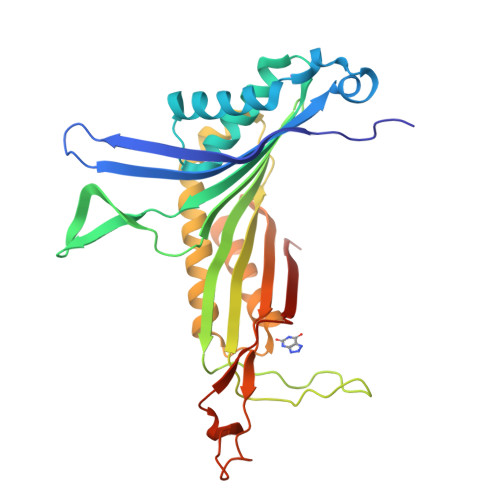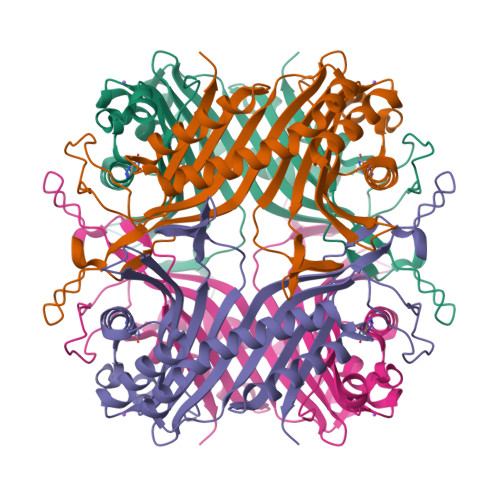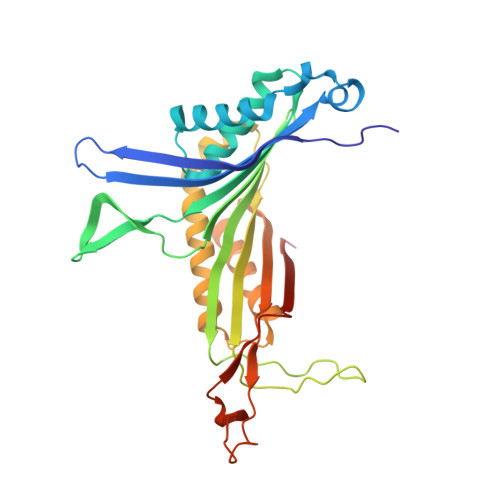Functional relevance of the internal hydrophobic cavity of urate oxidase.
Colloc'h, N., Prange, T.(2014) FEBS Lett 588: 1715-1719
- PubMed: 24657440
- DOI: https://doi.org/10.1016/j.febslet.2014.03.017
- Primary Citation of Related Structures:
4OP6, 4OP9 - PubMed Abstract:
Urate oxidase from Aspergillus flavus is a 135 kDa homo-tetramer which has a hydrophobic cavity buried within each monomer and located close to its active site. Crystallographic studies under moderate gas pressure and high hydrostatic pressure have shown that both gas presence and high pressure would rigidify the cavity leading to an inhibition of the catalytic activity. Analysis of the cavity volume variations and functional modifications suggest that the flexibility of the cavity would be an essential parameter for the active site efficiency. This cavity would act as a connecting vessel to give flexibility to the neighboring active site, and its expansion under pure oxygen pressure reveals that it might serve as a transient reservoir on its pathway to the active site.
Organizational Affiliation:
CERVoxy Team, ISTCT UMR 6301, CNRS, Centre Cyceron, Caen, France; ISTCT UMR 6301, CEA, DSV/I2BM, Caen, France; ISTCT UMR 6301, Université de Caen Basse-Normandie, Normandie Université, Caen, France. Electronic address: colloch@cyceron.fr.




















